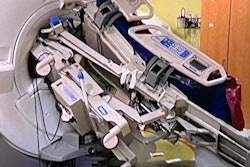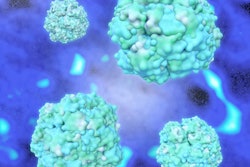Gadolinium dose for MR imaging can be reduced by more than half the standard level and still effectively distinguish meningiomas from surrounding tissues, researchers have reported.
A team led by Tshea Dowers, MD, of the University of Toronto in Canada found that a gadolinium dose reduction of 62% offered sufficient visual delineation of brain tumors from healthy tissue. The results were published June 10 in the American Journal of Neuroradiology.
"At the standard gadolinium dose, most meningiomas show avid contrast enhancement suggesting that administering a smaller dose may be feasible," the authors explained.
The findings could improve patient care, Dowers and colleagues noted. Experts have been concerned about the side effects, cost, and environmental impact of gadolinium-based contrast agents and researchers have explored how much gadolinium contrast doses can be reduced without affecting efficacy. To assess a range of gadolinium doses, Dowers and colleagues conducted a study that included 108 patients with suspected or confirmed meningiomas who underwent brain MRI with varying doses of gadolinium. The exams were categorized into three groups depending on the gadolinium dose size: micro (25% of the standard dose, which is typically 0.1 mmol), low (62% of the standard dose), and standard. The group tracked signal differences for each dose for both quantitative and qualitative assessment and compared low and microdose performance to standard dose.
The team found the following:
- Decreasing the gadolinium dose to a low or microdose resulted in a statistically significant decrease in signal difference between the tumor and the adjacent brain tissues (p < 0.02), and on visual assessment, the low dose was comparable in performance to the standard dose.
- The proportion of cases with less-than-optimal differentiation between meningioma and healthy tissue was significantly higher for the micro dose than for the standard dose, both for the differentiation between the tumor and the cortex (p = 0.041) and differentiation between tumor and sinus (p < 0.001).
Even so, reducing the gadolinium dose to 62% of the standard level still allowed for sufficient visual delineation of meningiomas from surrounding tissues, according to the team, although "further reduction to 25% … compromises the ability to distinguish the tumor from adjacent structures and is, therefore, not advisable," the researchers concluded.
The complete study can be found here.



.fFmgij6Hin.png?auto=compress%2Cformat&fit=crop&h=100&q=70&w=100)




.fFmgij6Hin.png?auto=compress%2Cformat&fit=crop&h=167&q=70&w=250)











